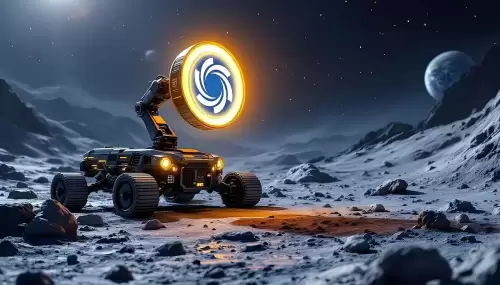 |
|
 |
|
 |
|
 |
|
 |
|
 |
|
 |
|
 |
|
 |
|
 |
|
 |
|
 |
|
 |
|
 |
|
 |
|
Cryptocurrency News Articles
RWA Tokenization Gains Traction in 2025 as It Connects Traditional Finance with Decentralized Finance (DeFi)
May 15, 2025 at 05:00 pm
Real-world asset (RWA) tokenization is gaining traction in 2025 as it connects traditional finance with decentralized finance (DeFi). RWA includes converting assets such as real estate

Real-world asset (RWA) tokenization has been steadily gaining momentum in 2025 as it serves as a bridge between traditional finance and decentralized finance (DeFi).
The Essence of RWA Tokenization
RWA involves transferring assets such as real estate, commodities, and government bonds onto blockchain networks, thereby creating programmable and divisible tokens. This process introduces new avenues for liquidity and investment in traditional asset classes within the DeFi ecosystem.
The sector has seen consistent growth, with on-chain RWAs reaching $22.5 billion by May 2025, an increase of nearly 7% in the past 30 days.
According to recent analysis by blockchain data firm Chainalysis, the sector is expected to grow to $50 billion by year-end, with LongHash's projections positioning the sector to reach $10 trillion by 2030. According to figures from RWA.xyz, the total issuance volume of stock RWAs has hit $445.40 million.
The integration of institutional players such as BlackRock, Fidelity, and Goldman Sachs has been pivotal in the development of RWAs. Moreover, the U.S. Securities and Exchange Commission (SEC) held a roundtable discussion on tokenization in May 2025, highlighting progress on the regulatory front.
These developments suggest that as the 2025 crypto cycle progresses, RWAs may emerge as a dominant force, especially with the SEC's active role in guiding the tokenization landscape.
Decentralized Physical Infrastructure Networks (DePIN): Redefining Physical Infrastructure
DePIN stands for Decentralized Physical Infrastructure Networks, an emerging market focused on decentralized physical infrastructure, encompassing computing, storage, and connectivity.
Leveraging blockchain technology, DePINs aim to establish decentralized networks that reward contributors for maintaining and expanding infrastructure. This innovation could have far-reaching implications, potentially disrupting the telecommunications, Internet of Things (IoT), and artificial intelligence (AI) industries.
According to reports from IIR, a market research firm specializing in advanced technologies, the DePIN market is projected to reach $3.5 trillion by 2028.
Leading projects in decentralized computing and connectivity include Theta Network and Akash Network. Theta, renowned for its blockchain video delivery platform, is also developing EdgeCloud, a decentralized network for delivering content and applications to users in close proximity.
Meanwhile, Akash provides cost-competitive cloud services, rendering it an ideal platform for deploying blockchain solutions like PoS nodes or AI workloads and IoT applications.
As decentralized infrastructure, DePIN offers scalable and cost-effective alternatives to traditional systems. Furthermore, the growing interest in decentralized energy grids and smart cities continues to make DePINs a key player in the development of Web3.
The potential of DePIN lies in its ability to render physical infrastructure, such as data centers, 5G networks, and solar farms, into programmable and tokenized assets. This transformation can be attributed to the integration of blockchain technology.
Decentralized Artificial Intelligence (DeAI): A New Era of Intelligence
Decentralized Artificial Intelligence (DeAI) combines the principles of blockchain and AI to create decentralized and transparent AI ecosystems that are free from censorship, offering an alternative to centralized AI models.
The DeAI sector is expected to grow in tandem with RWAs and DePINs, supported by advancements in decentralized computing power offered by networks like Akash.
DeAI platforms like SingularityNET and Fetch.ai enable the development and deployment of AI models in a decentralized manner, promoting cooperation among AI researchers and developers while increasing privacy for users.
The AI and RWA crypto token market is already valued at over $65 billion. With further investment in AI infrastructure, DeAI is well-positioned to capture a substantial share of the market by 2025.
However, despite its promise, DeAI faces several challenges that need to be addressed. These include the need for scalability to handle a large number of users and transactions, regulatory obstacles that may hinder its adoption, and the potential for bias in algorithms used by AI models.
Despite these hurdles, DeAI's potential to democratize AI development and create a more equitable and accessible ecosystem positions it as a strong contender in the 2025 crypto cycle.
Interconnected Growth: Synergies Between RWA, DePIN, and DeAI
As the cryptocurrency landscape evolves, we observe a growing synergy among three technological trends: real-world assets (RWA), decentralized physical infrastructure networks (DePIN), and decentralized artificial intelligence (DeAI). These three sectors are becoming increasingly interconnected, merging to form a hybrid ecosystem that integrates elements of both traditional and decentralized finance.
RWA tokenization provides liquidity to DePIN projects, which in turn contribute computing power for DeAI. For instance, if a project is building a network of solar farms and tokenizes them to raise capital, these tokens can be used to compensate maintainers of
Disclaimer:info@kdj.com
The information provided is not trading advice. kdj.com does not assume any responsibility for any investments made based on the information provided in this article. Cryptocurrencies are highly volatile and it is highly recommended that you invest with caution after thorough research!
If you believe that the content used on this website infringes your copyright, please contact us immediately (info@kdj.com) and we will delete it promptly.






























































